A 3D-Space Vector Modulation Algorithm for Three Phase Four Wire Neutral Point Clamped Inverter Systems as Power Quality Compensator
Abstract
:1. Introduction
2. PV-UPQC System
2.1. Operation of 3-Phase 4-Wire (Leg) NPC Inverter
2.2. Voltage and Current Control Loop of Proposed System
3. Effectual 3D-SVM for 3-Phase 4-Leg 3-Level NPC Inverter
3.1. Reference Vector Synthesis
3.2. Tracking of Subcubes and Prisms
3.3. Calculation of Switching Times
4. Simulation Results and Discussions
5. Experimental Results and Discussion
6. Conclusions
- ✓
- The dc-link capacitor voltage is balanced up to 1.2%.
- ✓
- The voltage and current THD of the proposed system is 0.22% and 1.79%, respectively, for balanced load and 7.88% and 6.24%, respectively, for unbalanced load.
- ✓
- Effectual 3D-SVM is better control method for 3-phase 4-leg 3-level NPC inverter, when compared to other methods reported in this paper.
Author Contributions
Conflicts of Interest
References
- Tolbert, L.M.; Peng, F.Z. Multilevel converters as a utility interface for renewable energy systems. In Proceedings of the IEEE PES Summer Meeting, Seattle, WA, USA, 16–20 July 2000. [Google Scholar]
- Aredes, M.; Hafner, J.; Heumann, K. Three-Phase four-wire shunt active filter control strategies. IEEE Trans. Power Electron. Soc. 1997, 12, 311–318. [Google Scholar] [CrossRef]
- Gupta, A.K.; Khambadkone, A.M. A Space Vector PWM Scheme for Multilevel Inverters Based on Two-Level Space Vector PWM. IEEE Trans. Ind. Electron. 2012, 53, 1631–1639. [Google Scholar] [CrossRef]
- López, Ó.; Alvarez, J.; Doval-Gandoy, J.; Freijedo, F.D. Multilevel multiphase space vector PWM algorithm. IEEE Trans. Ind. Electron. 2008, 55, 1933–1942. [Google Scholar] [CrossRef]
- Modesto, R.A.; da Silva, S.A.O.; de Oliveira Júnior, A.A. Power quality improvement using a dual unified power quality conditioner/uninterruptible power supply in three-phase four-wire systems. IET Power Electron. 2015, 8, 1595–1605. [Google Scholar] [CrossRef]
- Verdelho, P.; Marques, G.D. Four-wire current-regulated PWM voltage inverter. IEEE Trans. Ind. Electron. 1998, 45, 761–770. [Google Scholar] [CrossRef]
- Yuan, X.; Orglmeister, G.; Merk, W. Managing the DC link neutral potential of the three-phase-four-wire neutral-point-clamped (NPC) inverter in FACTS application. In Proceedings of the Iecon ′99 Proceedings. The 25th Annual Conference of the IEEE Industrial Electronics Society, San Jose, CA, USA, 29 November–3 December 1999; pp. 571–576. [Google Scholar]
- Ojo, O.; Kshirsagar, P.M. Concise modulation strategies for four-leg voltage source inverters. IEEE Trans. Power Electron. 2004, 19, 46–53. [Google Scholar] [CrossRef]
- Mienski, R.; Pawelek, R.; Wasiak, I. Shunt compensation for power quality improvement using a STATCOM controller: Modelling and simulation. IEEE Proc. Gener. Transm. Distrib. 2004, 151, 274–280. [Google Scholar] [CrossRef]
- Mittal, N.; Singh, B.; Singh, S.P.; Dixit, R.; Kumar, D. Multilevel inverters: A literature survey on topologies and control strategies. In Proceedings of the IEEE 2012 2nd International Conference on Power, Control and Embedded Systems, Allahabad, India, 17–19 December 2012; ISBN 978-1-4673-1049-9. [Google Scholar]
- Dai, N.Y.; Wong, M.C.; Han, Y.D. Controlling trilevel center-split power quality compensator by 3-dimensional space vector modulation. In Proceedings of the Fifth International Conference on Power Electronics and Drive Systems, PEDS 2003, Singapore, 17–20 November 2003. [Google Scholar]
- Rodriguez, J.; Lai, J.S.; Peng, F.Z. Multilevel inverters: A survey of topologies, controls and applications. IEEE Trans. Ind. Electron. 2013, 49, 724–738. [Google Scholar] [CrossRef]
- Prats, M.M.; Franquelo, L.G.; Portillo, R.; Leon, J.I.; Galvan, E.; Carrasco, J.M. A 3-D space vector modulation generalized algorithm for multilevel converters. IEEE Power Electron. Lett. 2003, 1, 110–114. [Google Scholar] [CrossRef]
- Zhang, R.; Prasad, V.H.; Boroyevich, D.; Lee, F.C. Three-Dimensional space vector modulation for four-leg voltage-source converters. IEEE Trans. Power Electron. 2002, 17, 314–326. [Google Scholar] [CrossRef]
- Wong, M.C.; Zhao, Z.Y.; Han, Y.D.; Zhao, L.B. Three-Dimensional pulse-width modulation technique in three-level power inverters for three-phase four-wired system. IEEE Trans. Power Electron. 2007, 16, 418–427. [Google Scholar] [CrossRef]
- Chu, C.C.; Chen, C.L. Robust maximum power point tracking method for photovoltaic cells: A sliding mode control approach. Sol. Energy 2009, 83, 1370–1378. [Google Scholar] [CrossRef]
- Gonzalez, R.; Gubia, E.; Lopez, J.; Marroyo, L. Transformerless single-phase multilevel-based photovoltaic inverter. IEEE Trans. Ind. Electron. 2008, 55, 2694–2702. [Google Scholar] [CrossRef]
- Korn, A.J.; Winkelnkemper, M.; Steimer, P.; Kolar, J.W. Capacitor voltage balancing in modular multilevel converters. In Proceedings of the 6th International Conference on Power Electronics, Machines and Drives (PEMD 2012), Bristol, UK, 27–29 March 2012. [Google Scholar]
- Qin, J.; Saeedifard, M. Reduced Switching-Frequency Voltage Balancing Strategies for Modular Multilevel HVDC Converters. IEEE Trans. Power Deliv. 2013, 28, 2403–2410. [Google Scholar] [CrossRef]
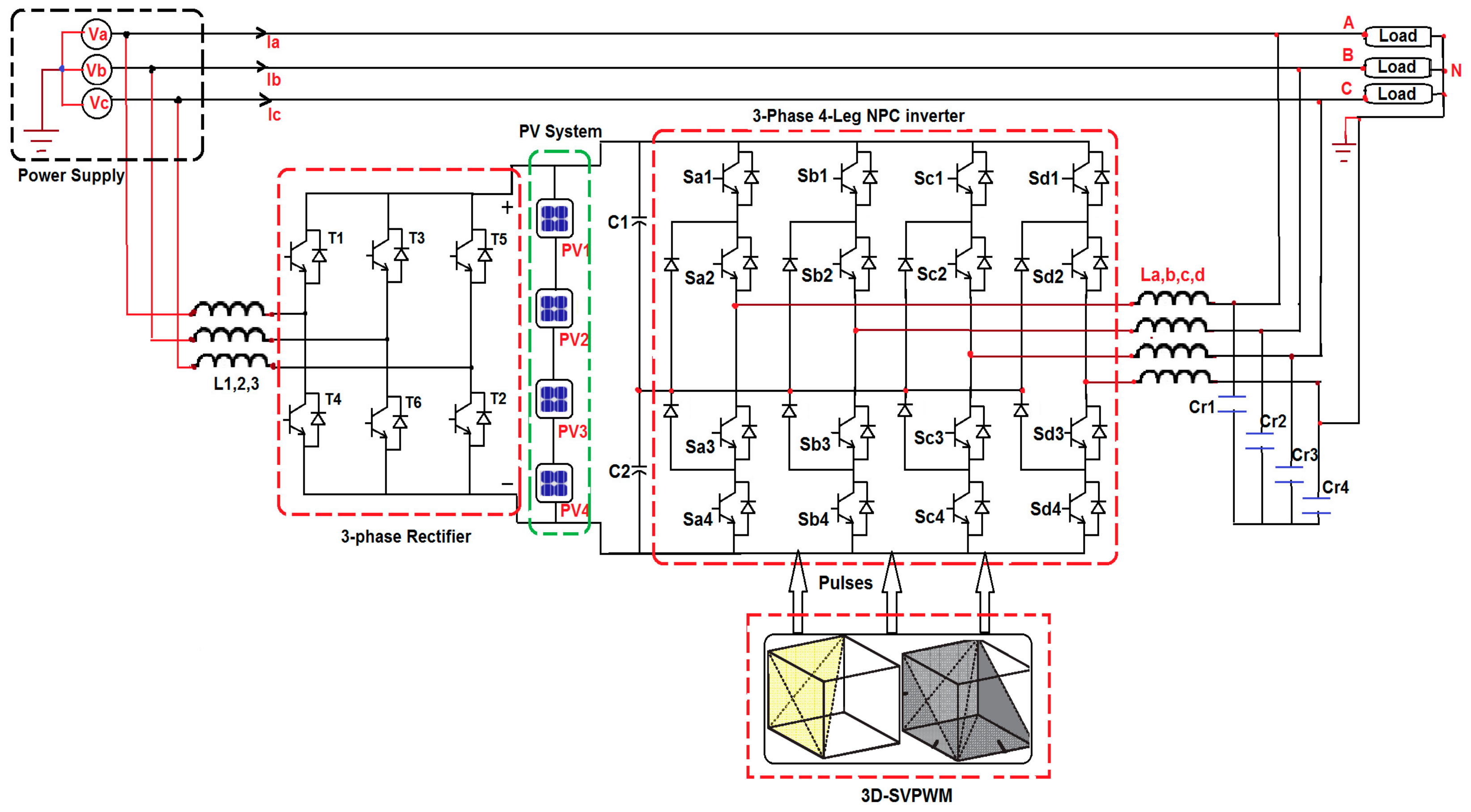
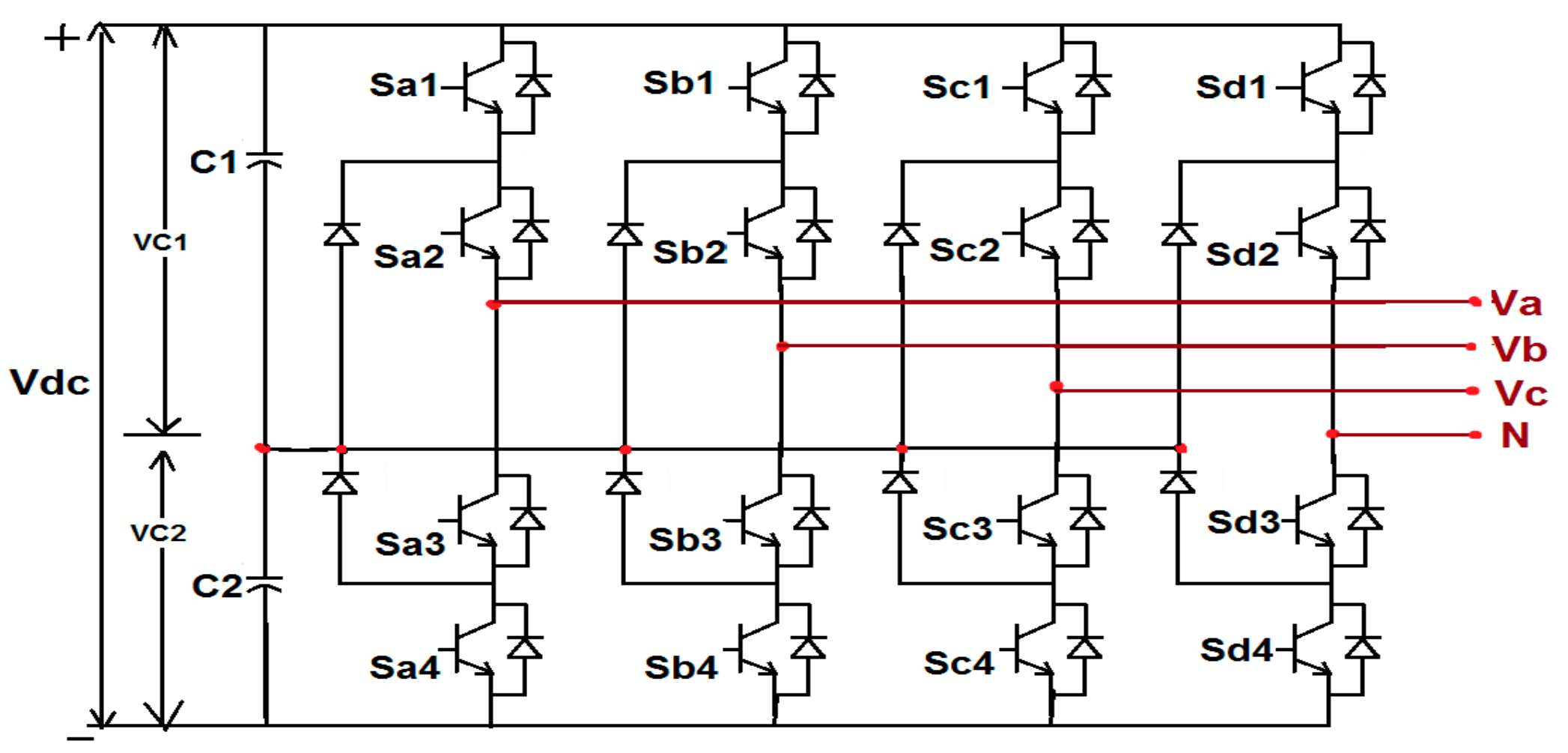
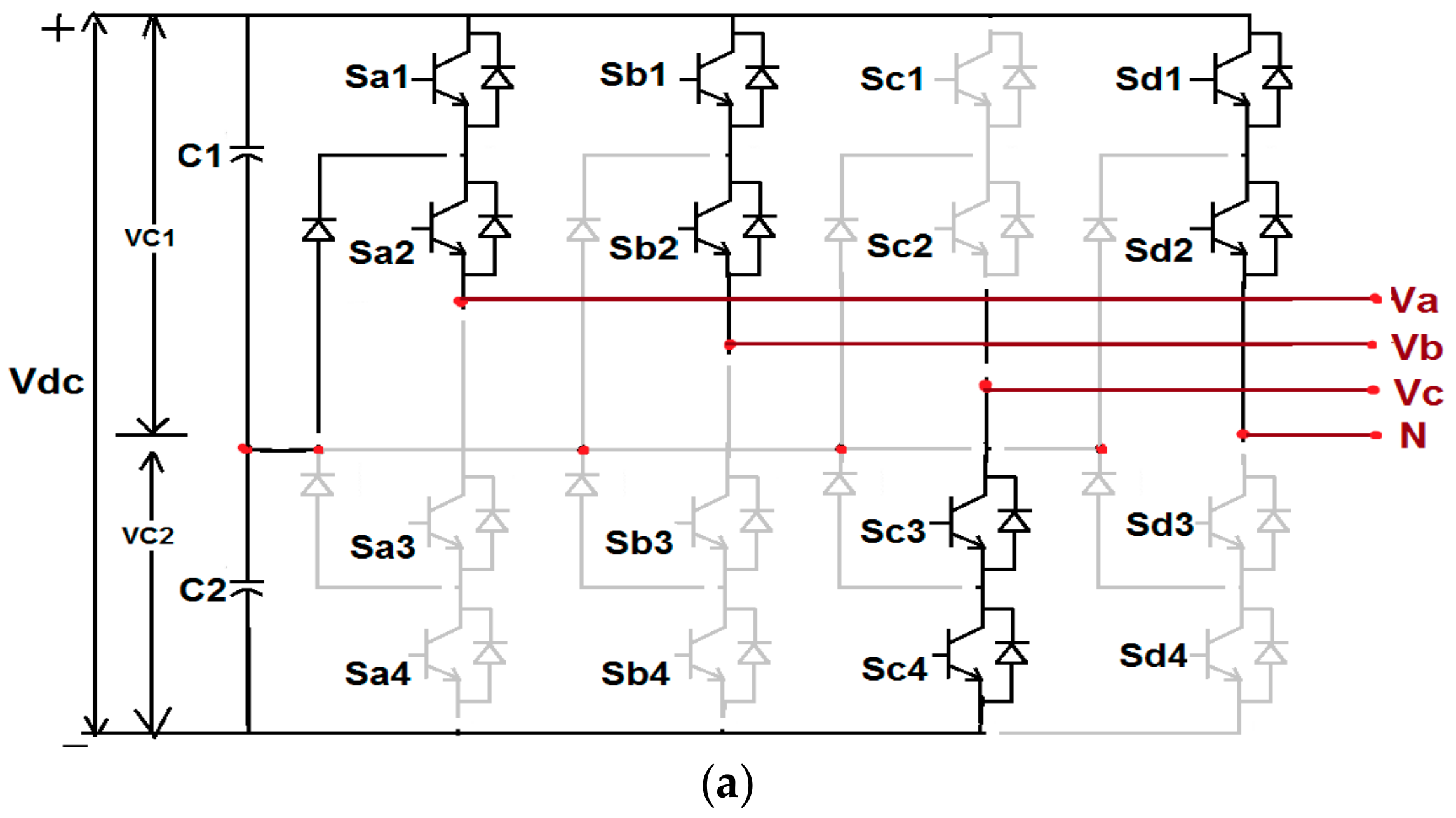
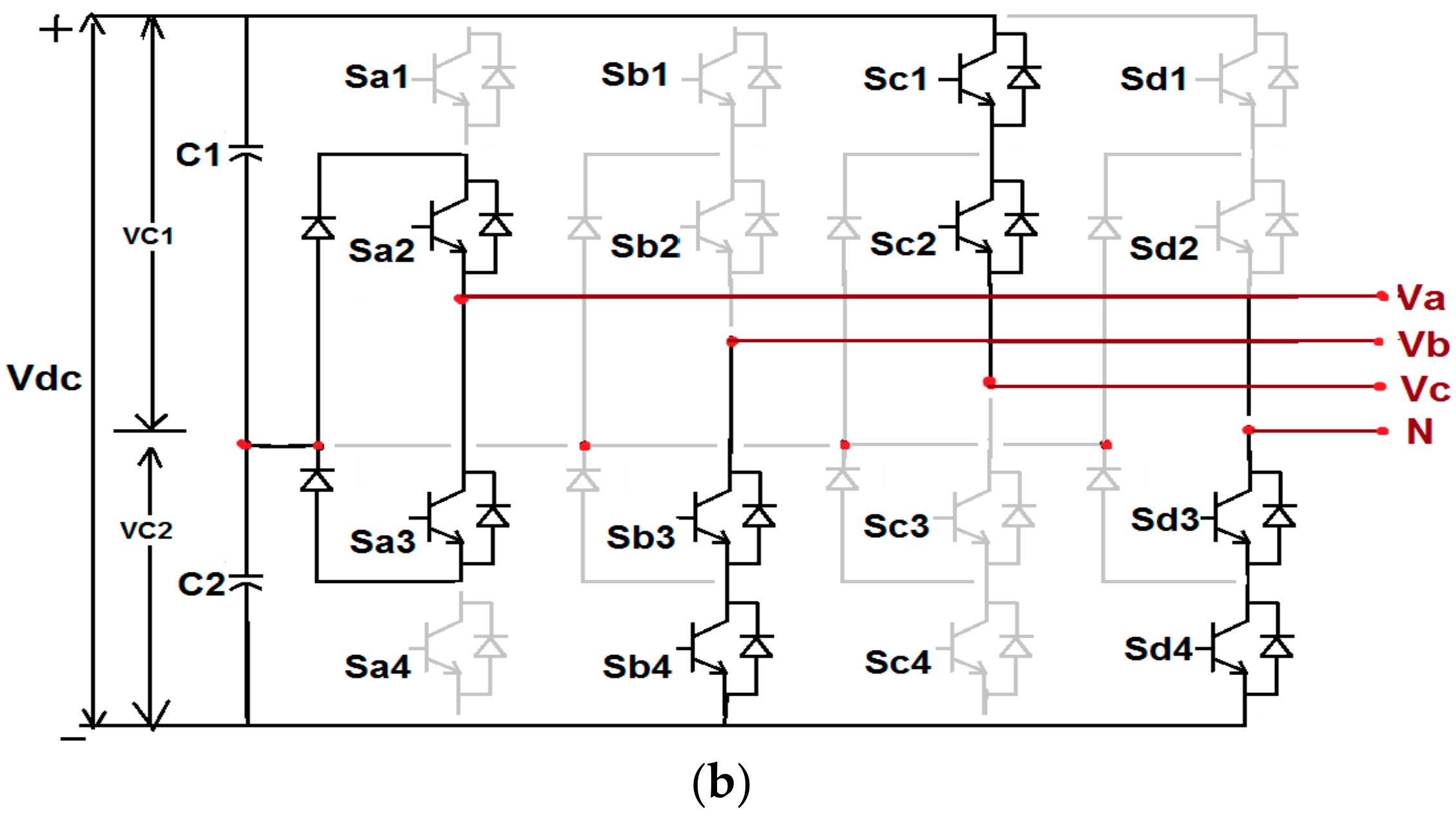

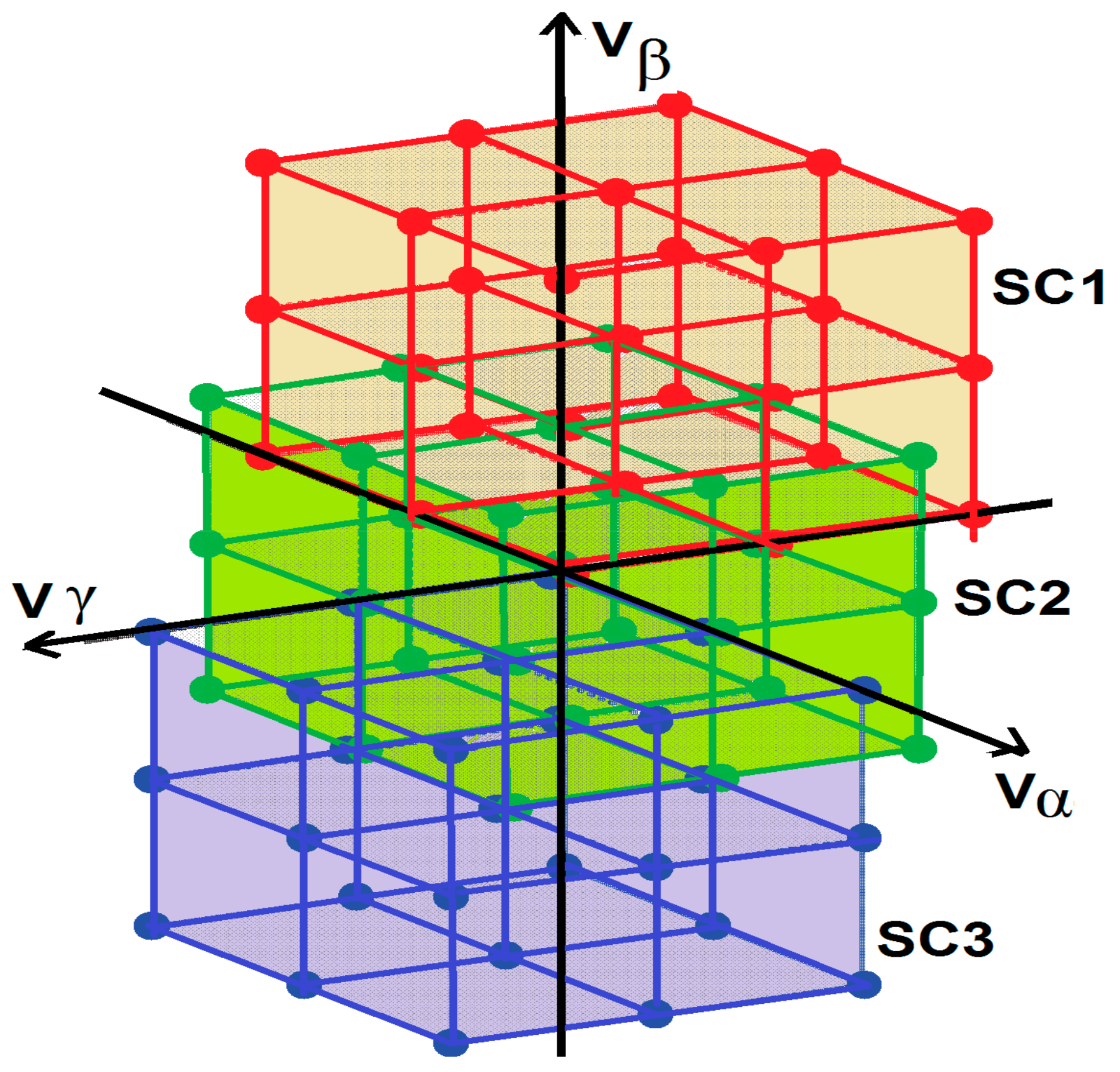
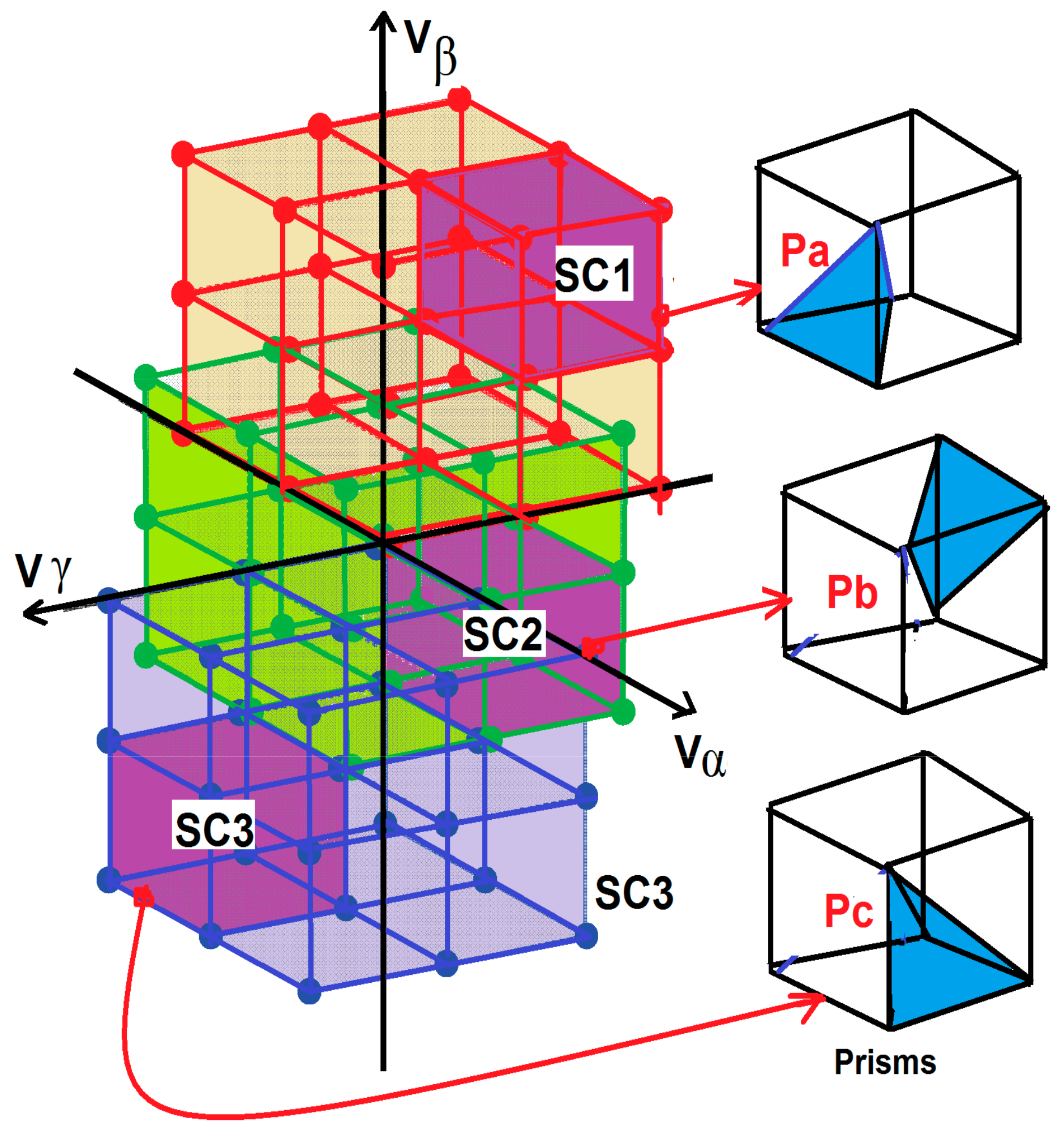

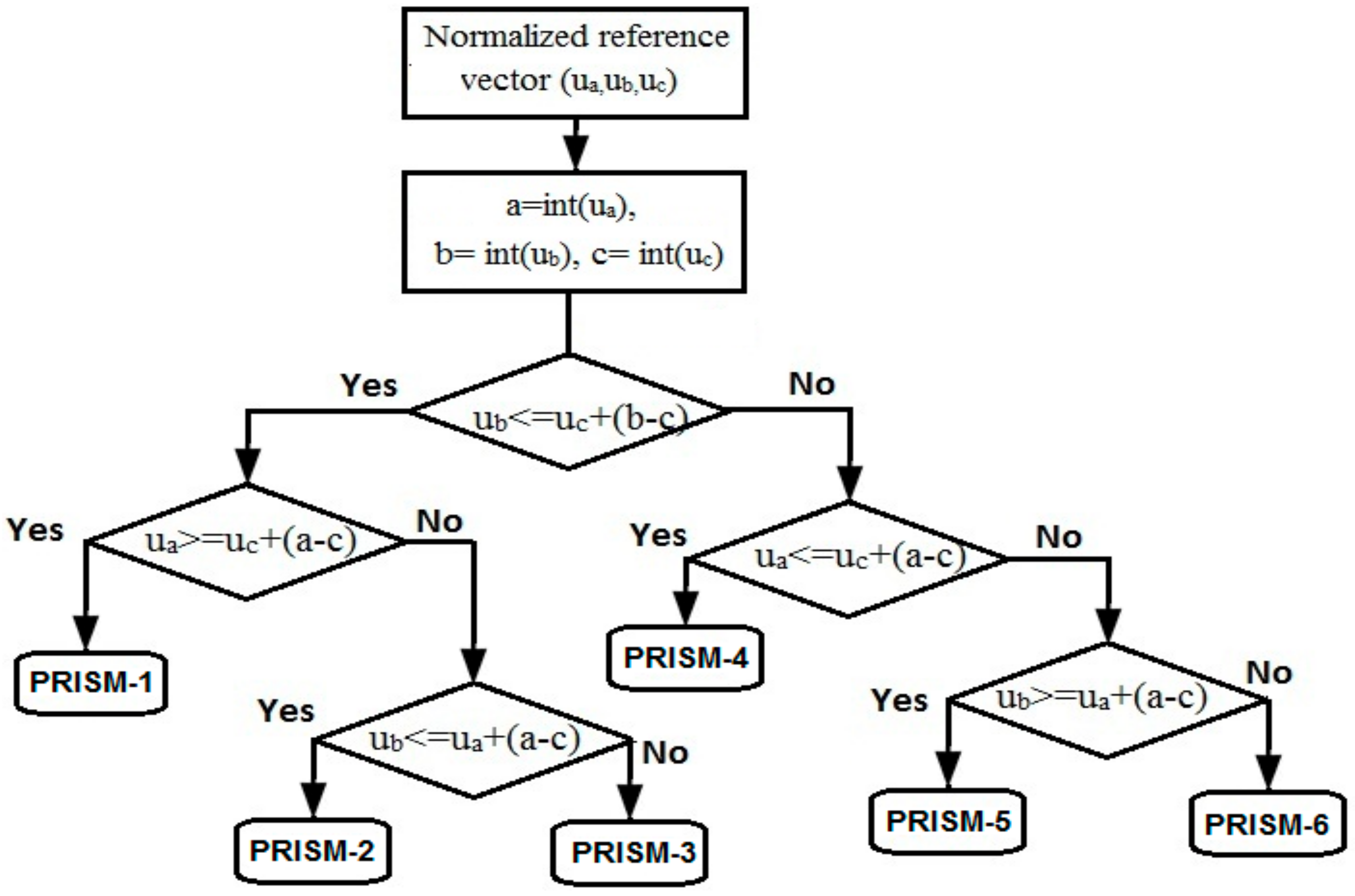

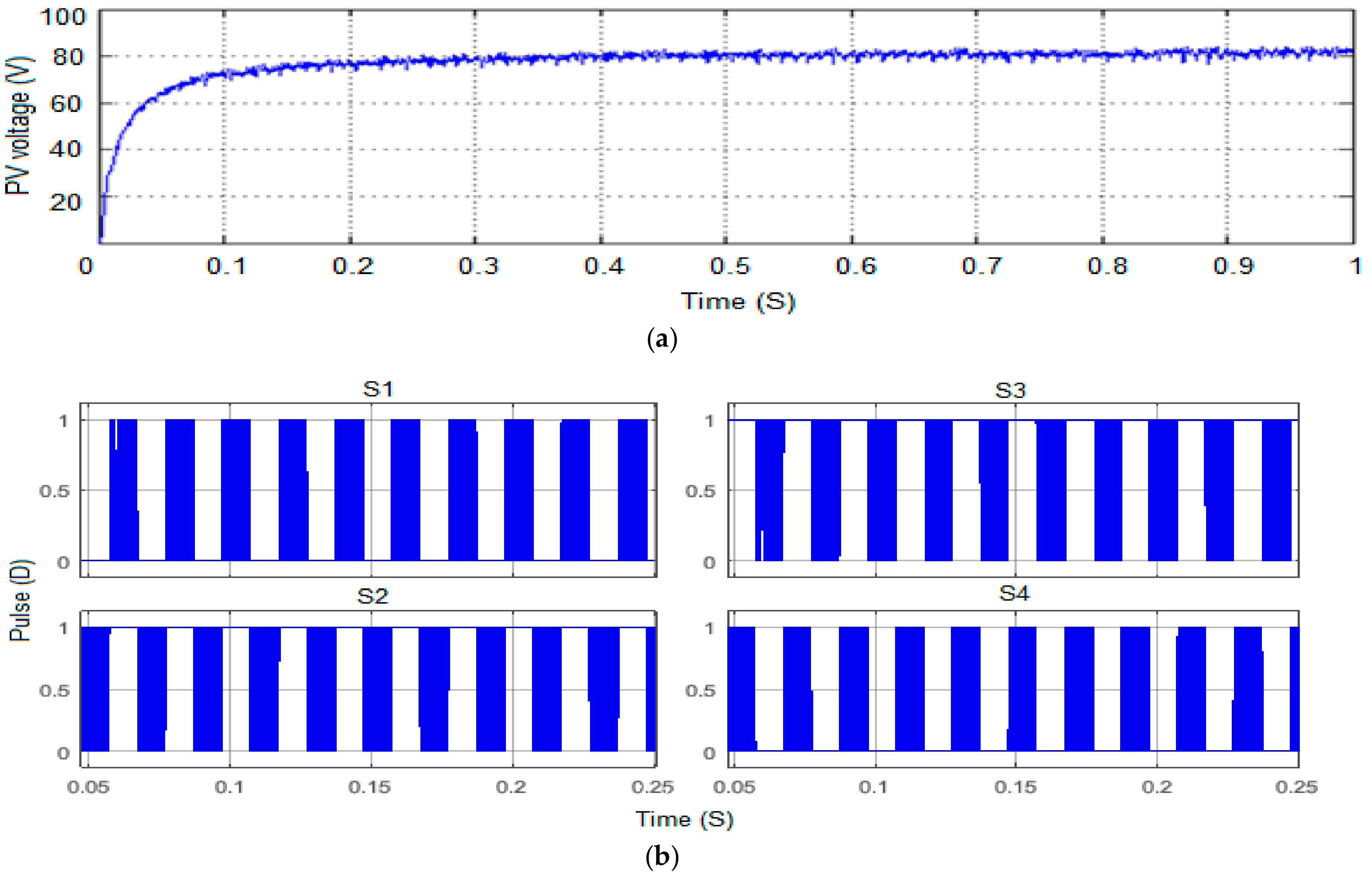
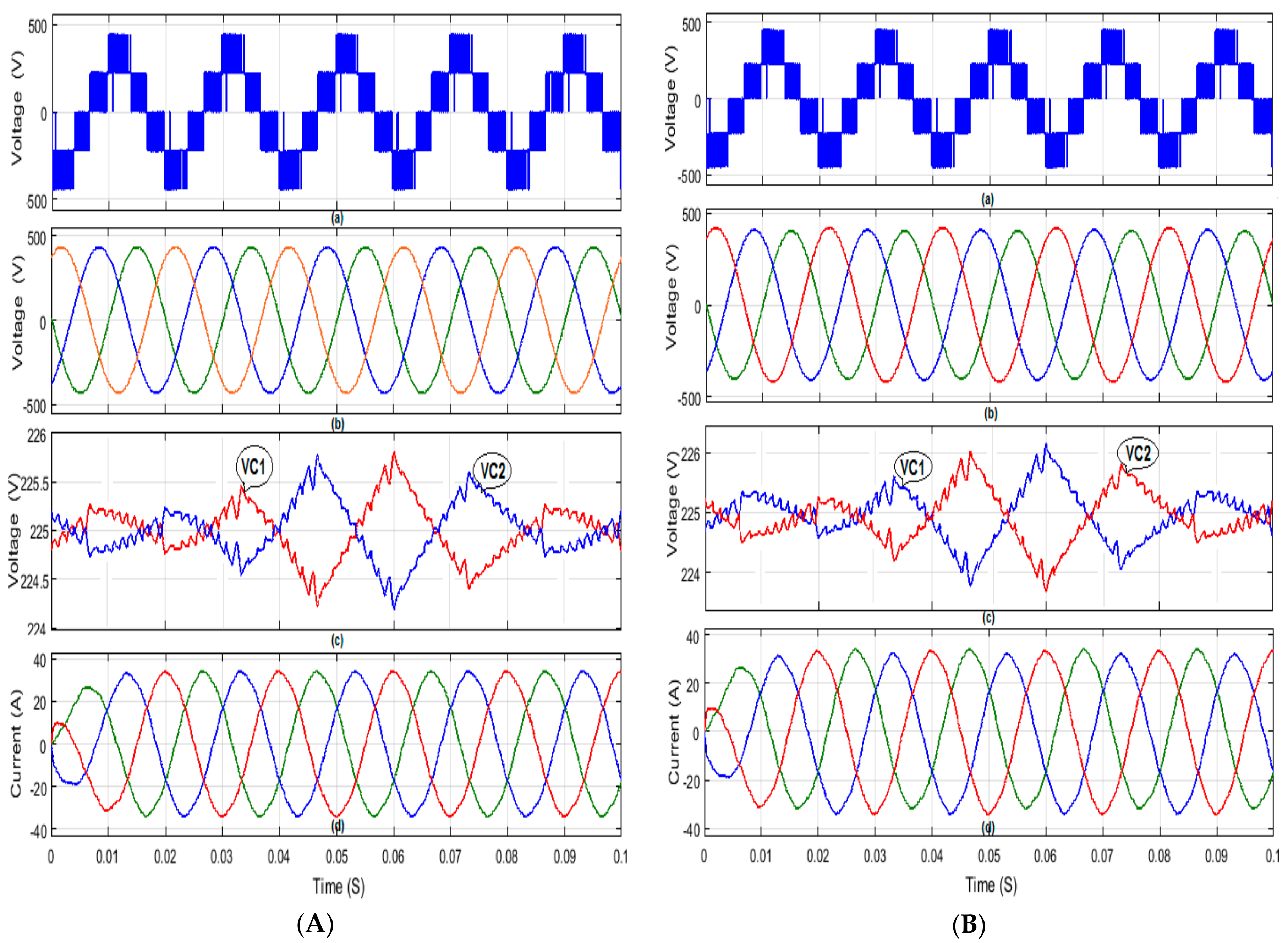
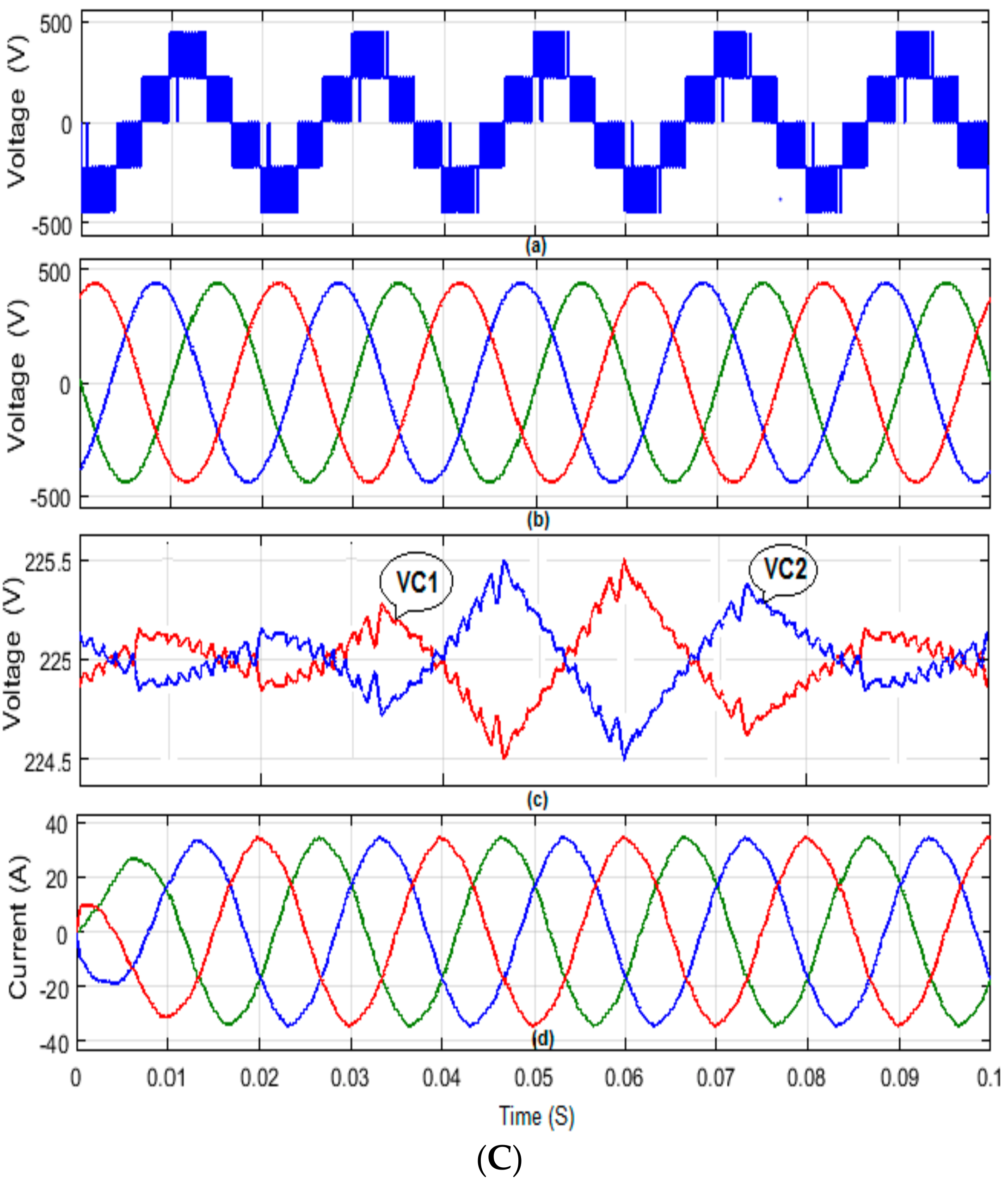
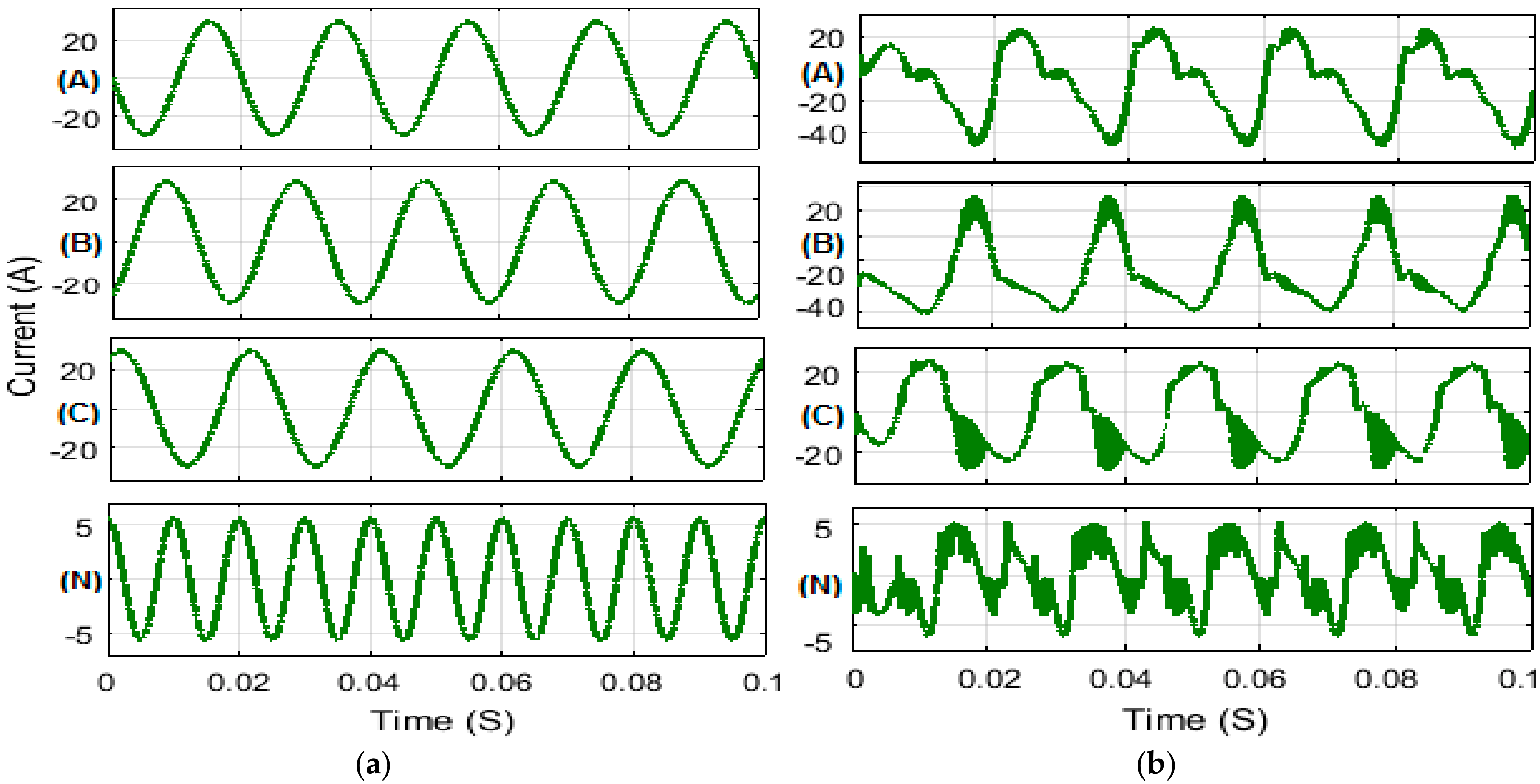
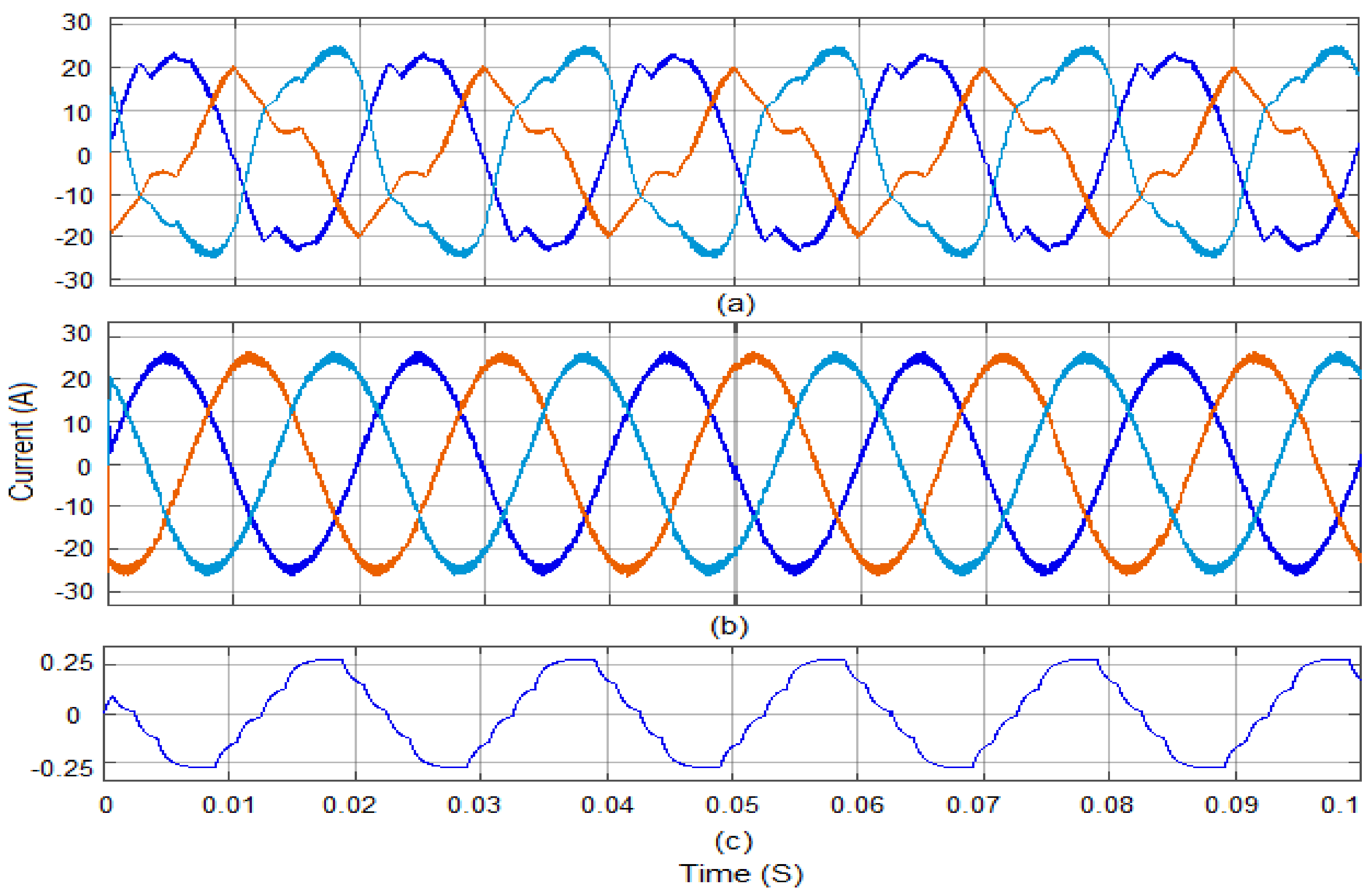
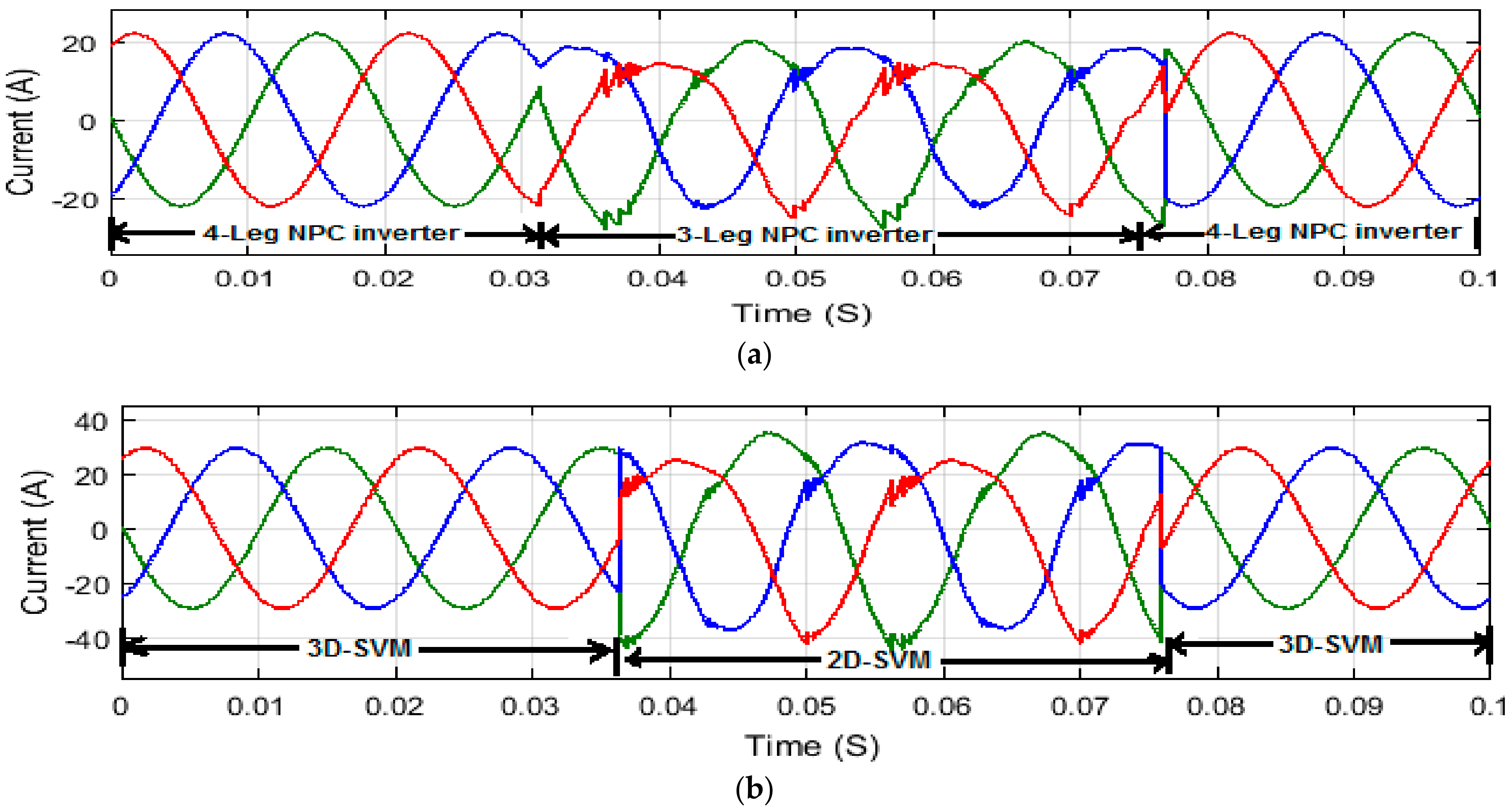
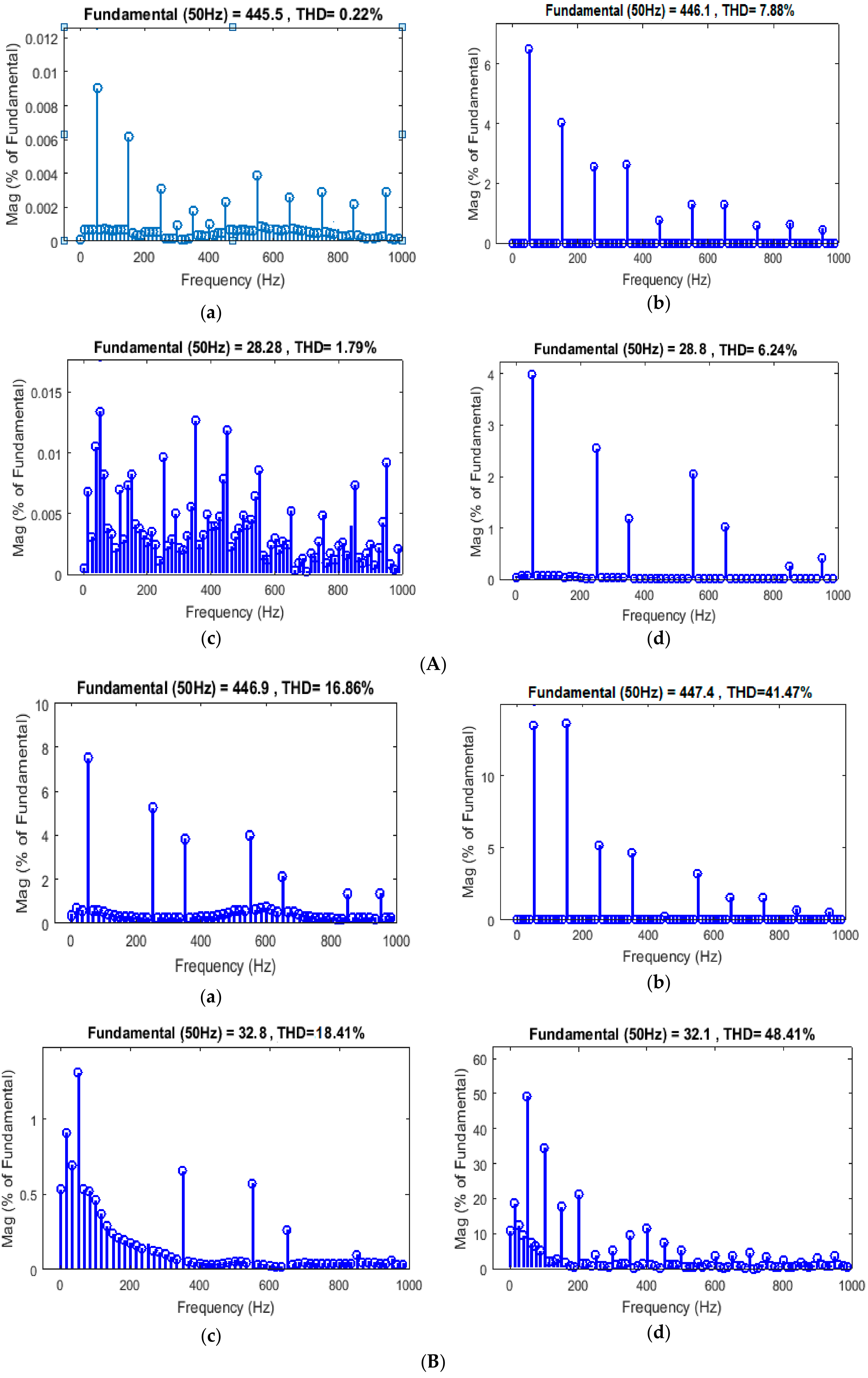
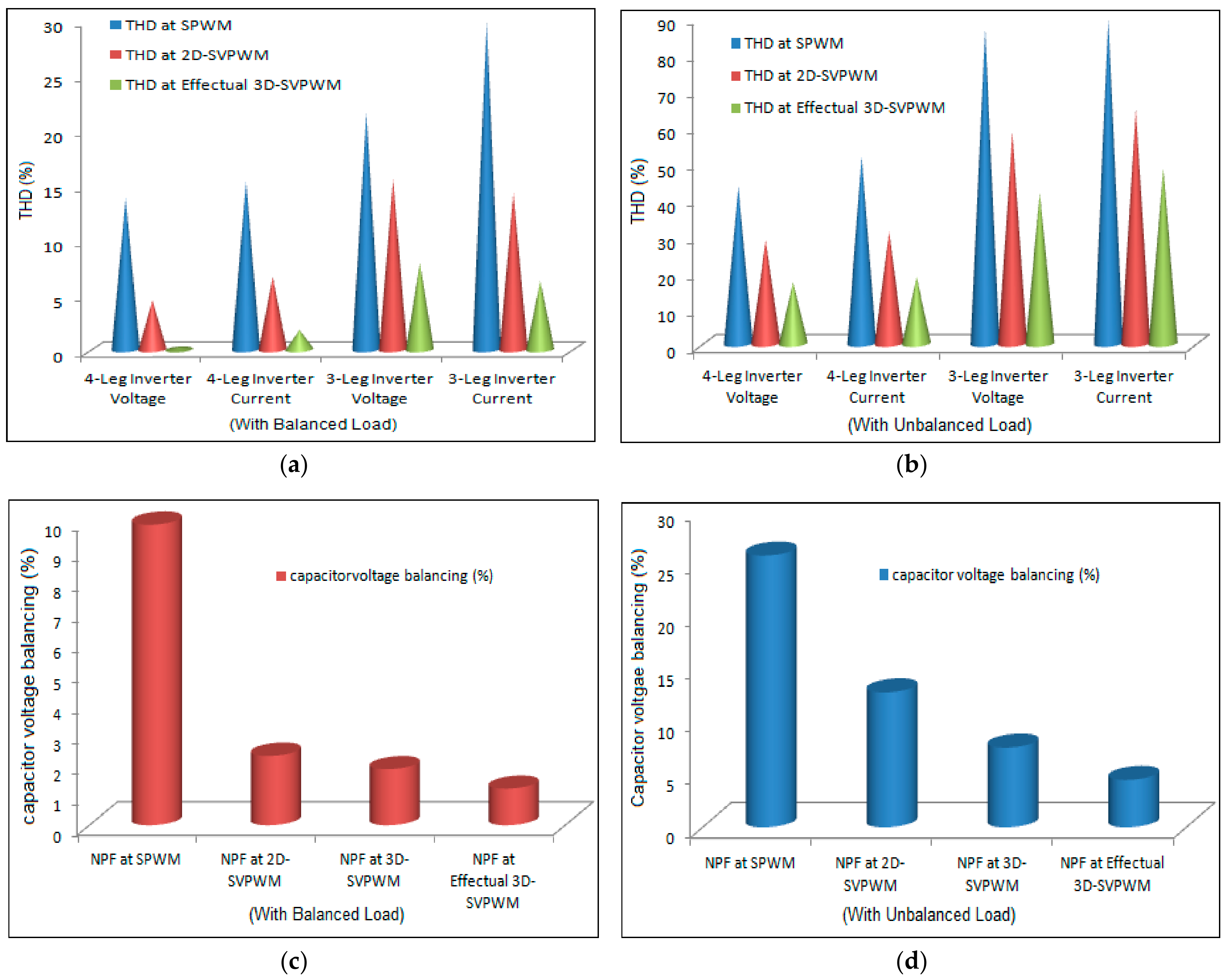
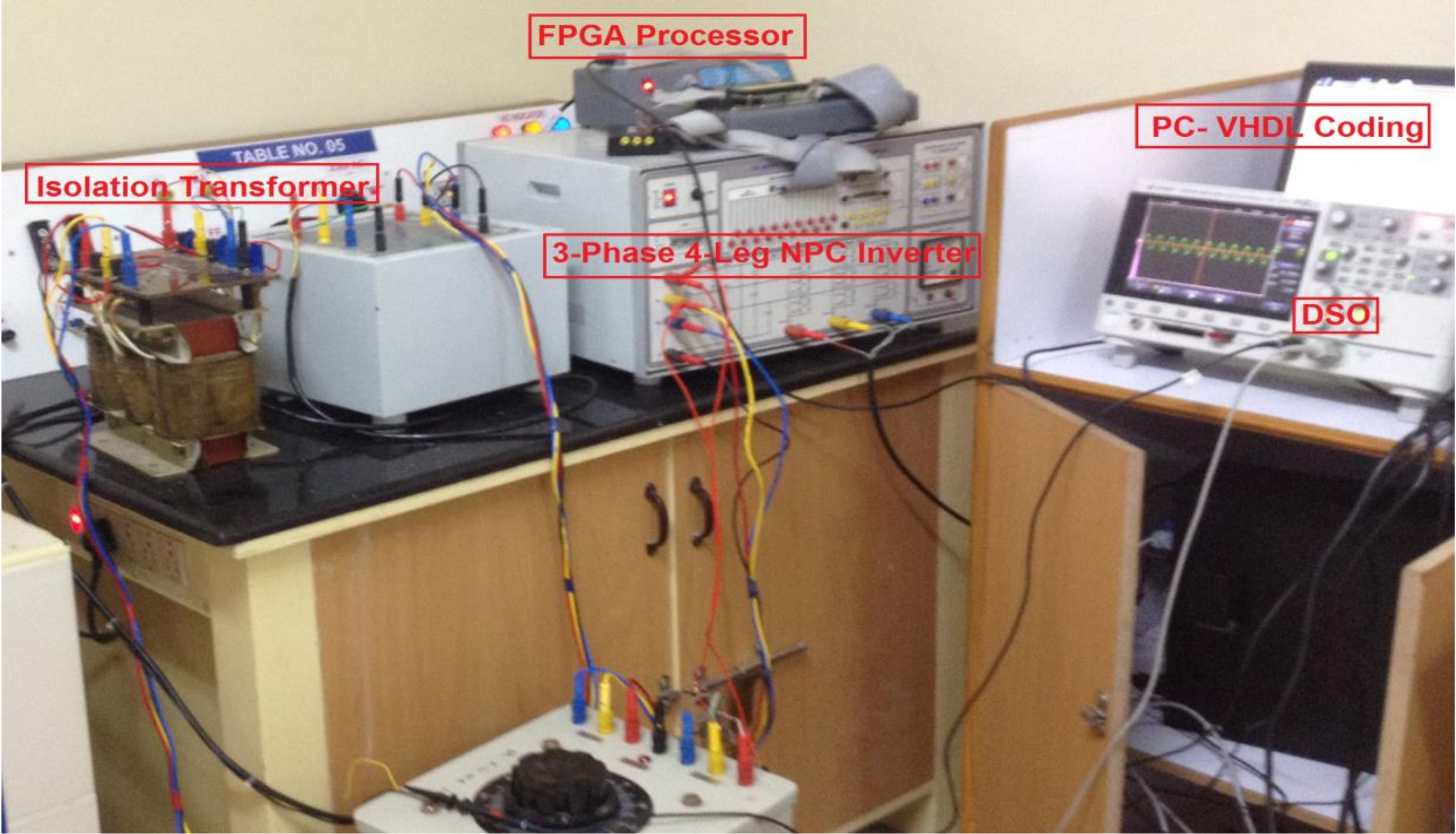
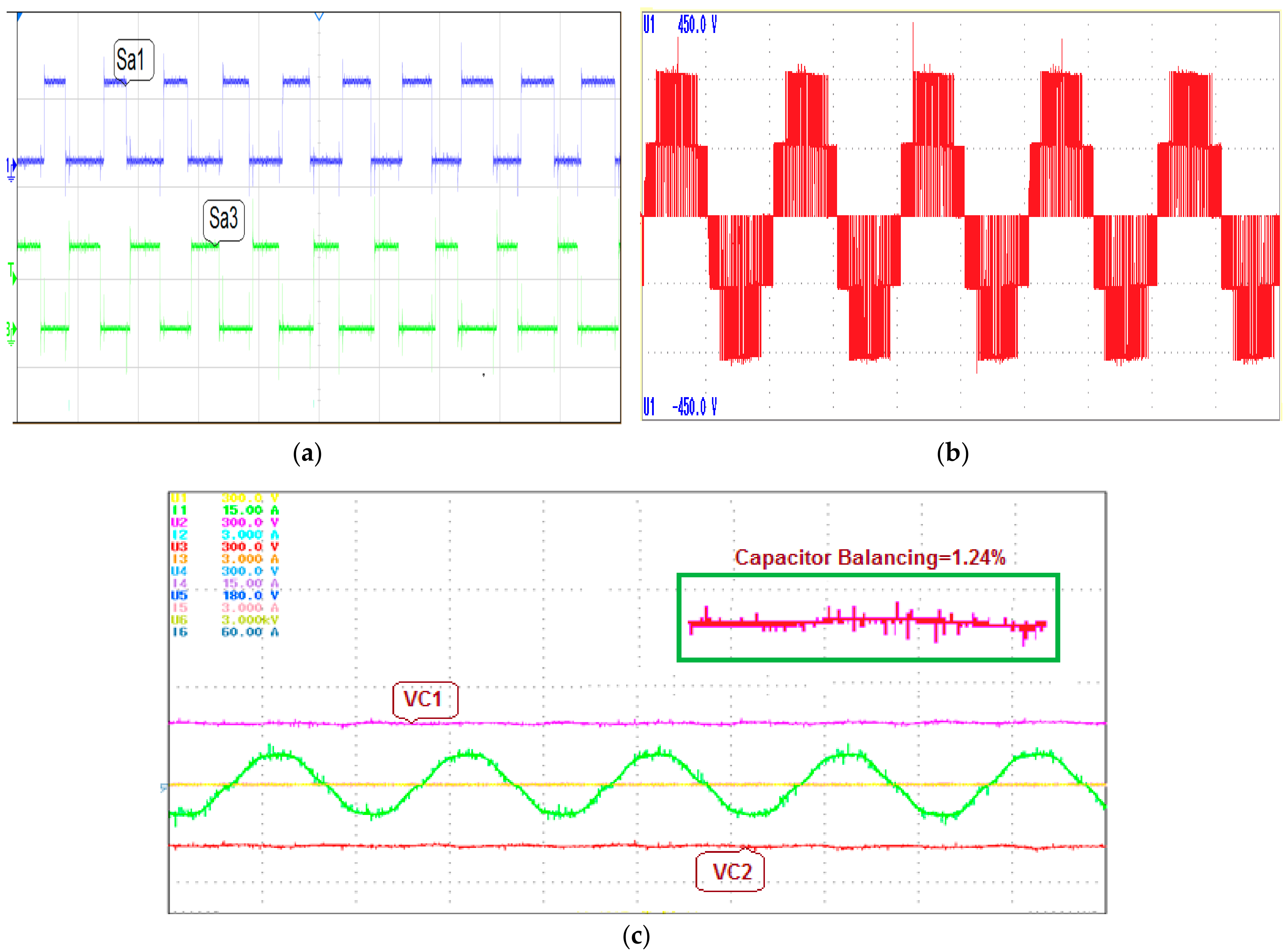
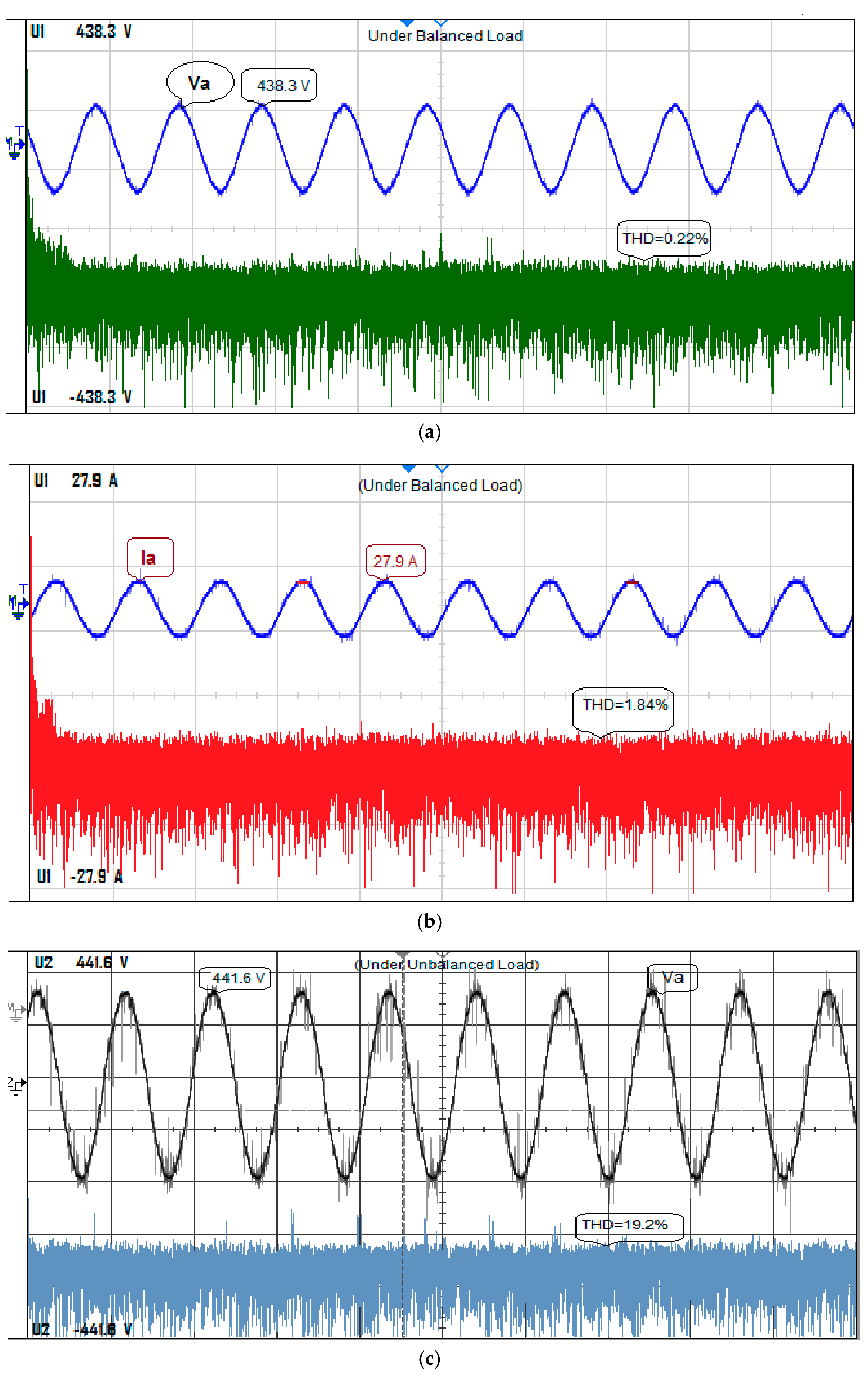
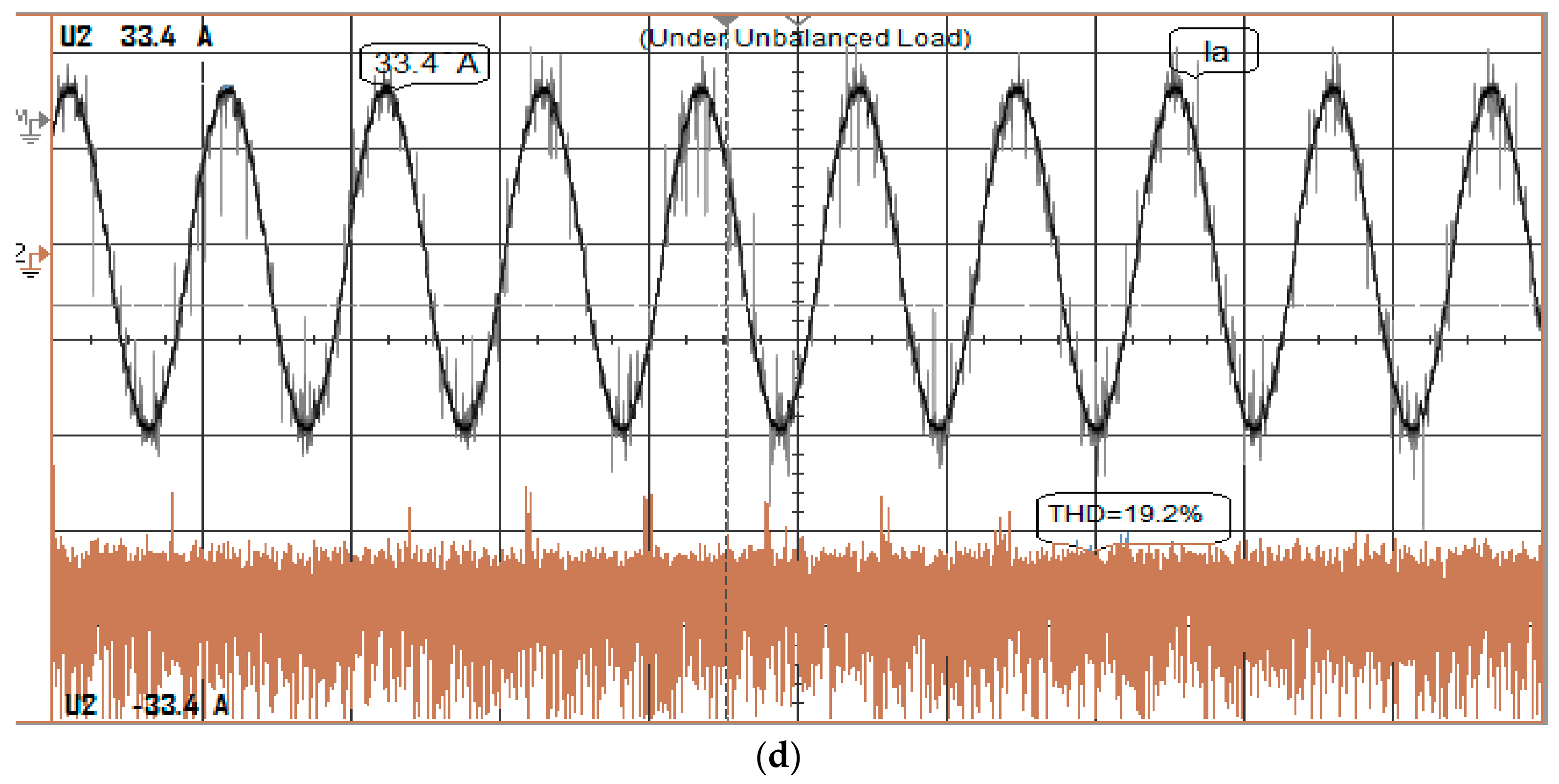
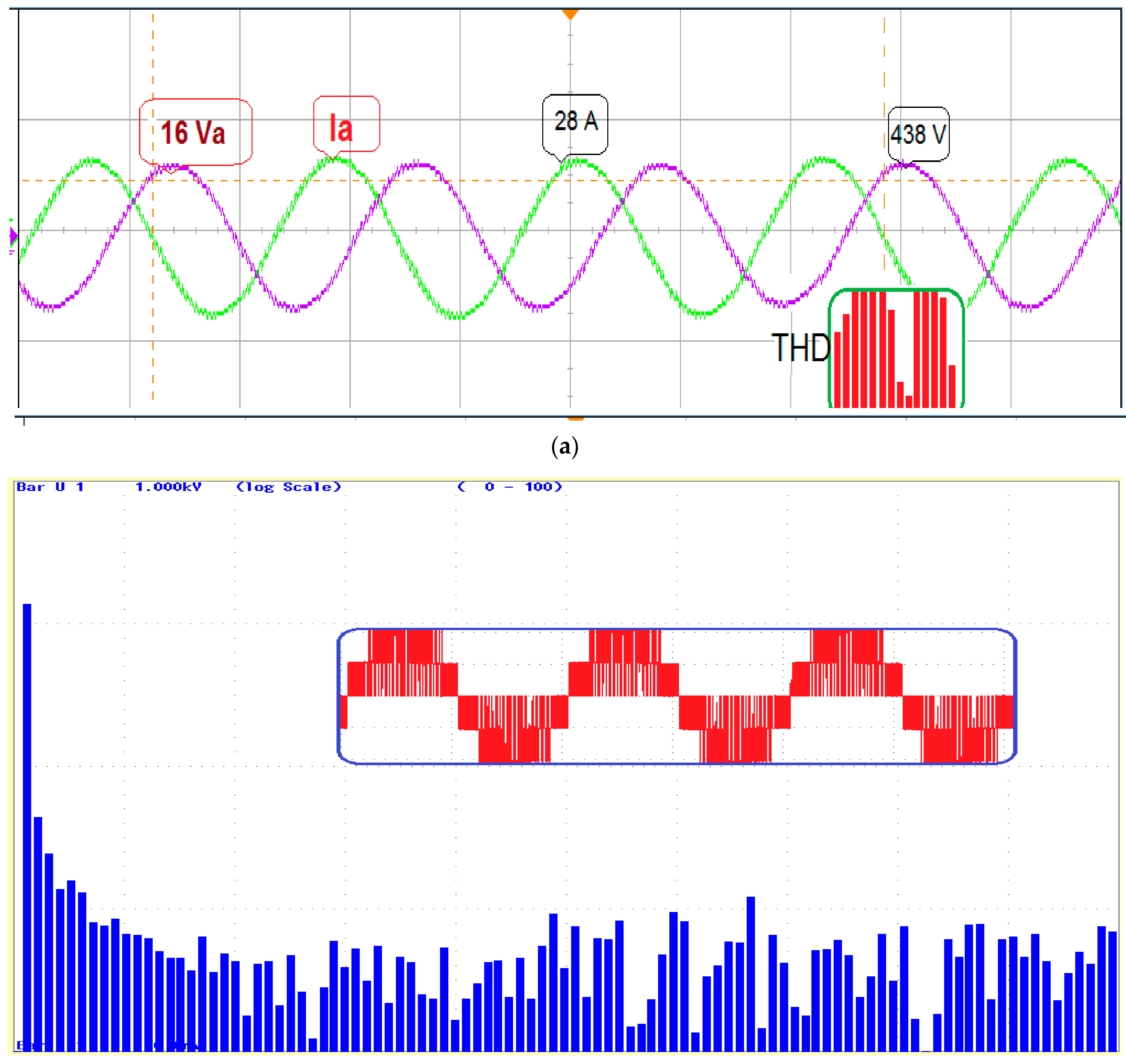
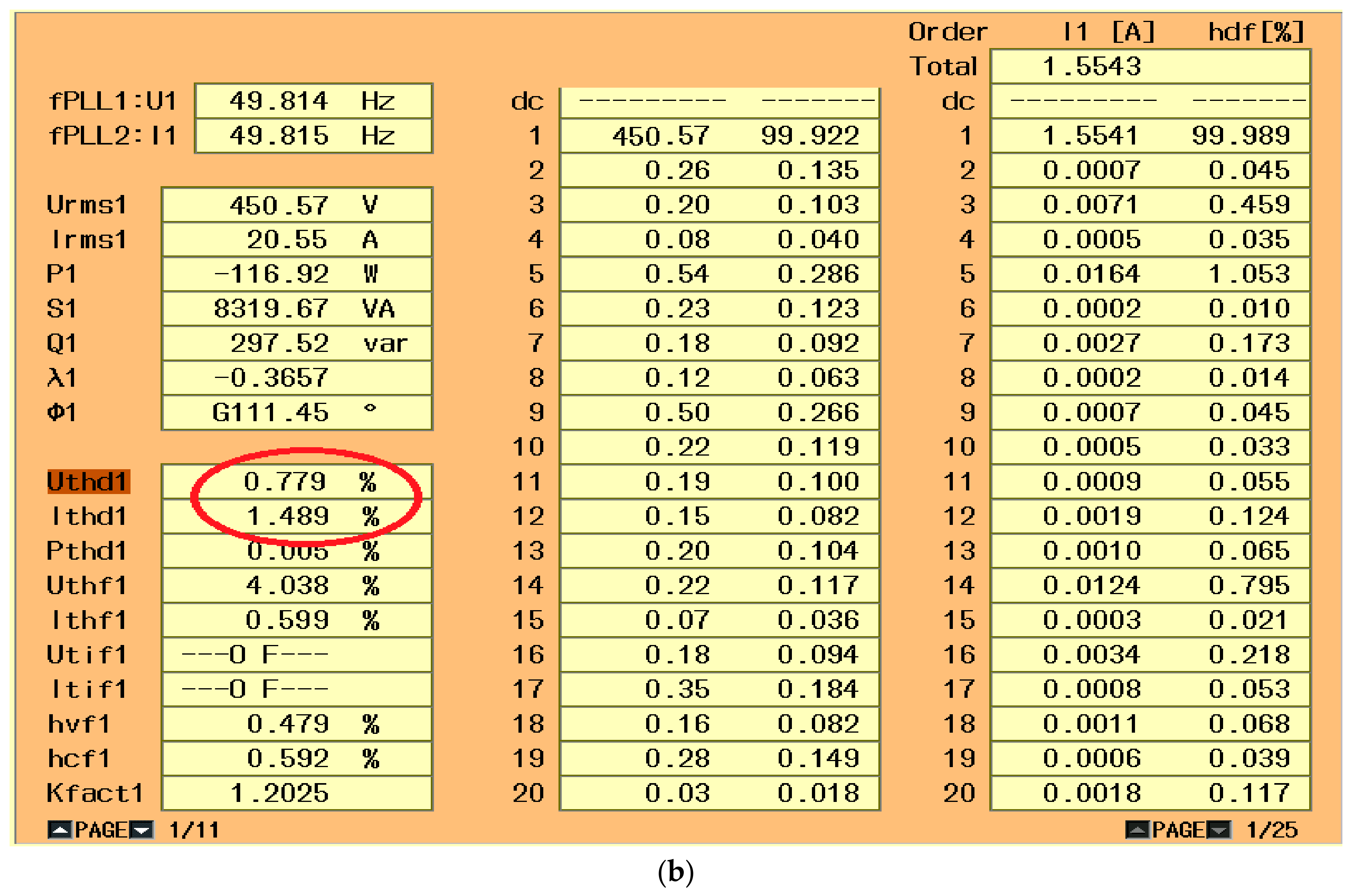
| Simulation Parameters | Values |
|---|---|
| DC link capacitance | 100 µF |
| Split Inductor | 4 mH |
| Solar Radiations | 300 W/m2 to 1200 W/m2 |
| Inverter switching frequency (fs) | 10 KHz |
| Temperature | 40 degree |
| PV DC-voltage | 80 V |
© 2017 by the authors. Licensee MDPI, Basel, Switzerland. This article is an open access article distributed under the terms and conditions of the Creative Commons Attribution (CC BY) license (http://creativecommons.org/licenses/by/4.0/).
Share and Cite
Ramasamy, P.; Krishnasamy, V. A 3D-Space Vector Modulation Algorithm for Three Phase Four Wire Neutral Point Clamped Inverter Systems as Power Quality Compensator. Energies 2017, 10, 1792. https://doi.org/10.3390/en10111792
Ramasamy P, Krishnasamy V. A 3D-Space Vector Modulation Algorithm for Three Phase Four Wire Neutral Point Clamped Inverter Systems as Power Quality Compensator. Energies. 2017; 10(11):1792. https://doi.org/10.3390/en10111792
Chicago/Turabian StyleRamasamy, Palanisamy, and Vijayakumar Krishnasamy. 2017. "A 3D-Space Vector Modulation Algorithm for Three Phase Four Wire Neutral Point Clamped Inverter Systems as Power Quality Compensator" Energies 10, no. 11: 1792. https://doi.org/10.3390/en10111792





